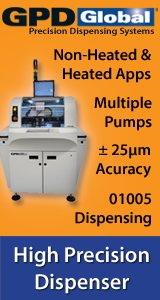Printed Circuit Board Assembly & PCB Design Forum
SMT electronics assembly manufacturing forum.
- SMTnet
- »
- Electronics Forum
- »
- Calculating PCB surface area
Calculating PCB surface area
![]() Hi.
Does anyone out there know of a way to calculate the su...
- May 14, 2002
by
David R
Hi.
Does anyone out there know of a way to calculate the su...
- May 14, 2002
by
David R
![]()
![]()
![]() Excuse me, but if I remember my physics lessons well, volume...
- May 14, 2002
by
CC to myself
Excuse me, but if I remember my physics lessons well, volume...
- May 14, 2002
by
CC to myself
![]()
![]()
![]() I think what David was getting at was, as an example.
Tak...
- May 14, 2002
by
I think what David was getting at was, as an example.
Tak...
- May 14, 2002
by
![]()
![]() Claude is right, however, this may work:
Dip the empty boar...
- May 14, 2002
by
Stefan Witte
Claude is right, however, this may work:
Dip the empty boar...
- May 14, 2002
by
Stefan Witte
![]()
![]()
![]() You guys must be managers!
...
- May 14, 2002
by
You guys must be managers!
...
- May 14, 2002
by
![]()
![]() I feel as though I�ve just walked in to a bar, where everyon...
- May 14, 2002
by
davef
I feel as though I�ve just walked in to a bar, where everyon...
- May 14, 2002
by
davef
![]()
![]()
![]() DaveF to the rescue, my favorate SMT search engine.
...
- May 15, 2002
by
Dilbert
DaveF to the rescue, my favorate SMT search engine.
...
- May 15, 2002
by
Dilbert
![]()
![]()
![]() This conversation reminds me of the old �How Many Engineers ...
- May 17, 2002
by
This conversation reminds me of the old �How Many Engineers ...
- May 17, 2002
by
![]()
![]()
![]() A man in a hot air balloon realized he was lost. He reduced ...
- May 17, 2002
by
A man in a hot air balloon realized he was lost. He reduced ...
- May 17, 2002
by
![]()
![]() in both samples the water displacement is 1 cubic inch of wa...
- May 17, 2002
by
CC to myself
in both samples the water displacement is 1 cubic inch of wa...
- May 17, 2002
by
CC to myself
![]()
![]()
![]() Great story! *grinz*
how do engineering managers get port...
- May 28, 2002
by
ianchan
Great story! *grinz*
how do engineering managers get port...
- May 28, 2002
by
ianchan
![]()
David R
- SMTnet
- »
- Electronics Forum
- »
- Calculating PCB surface area








